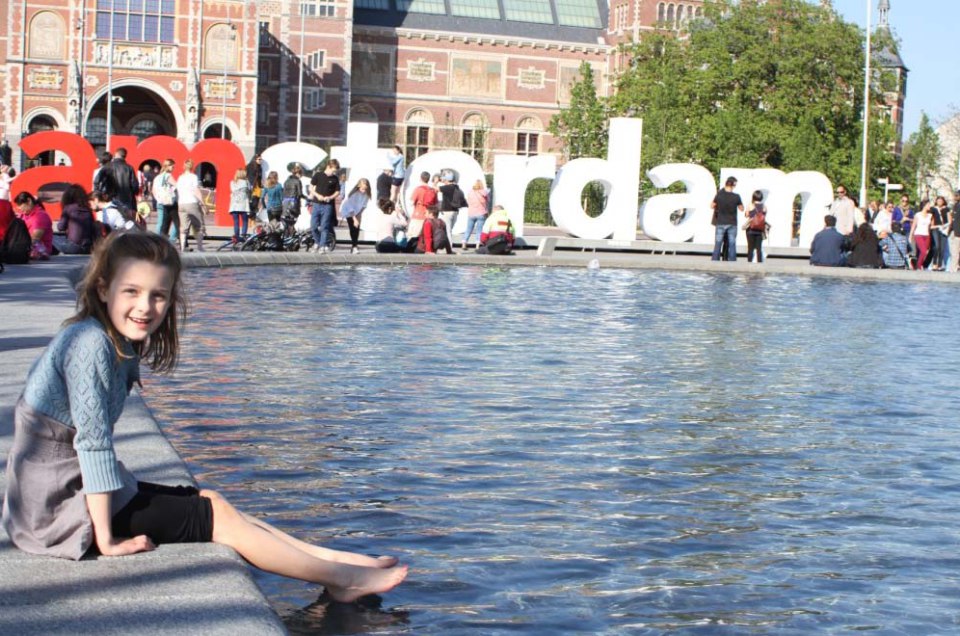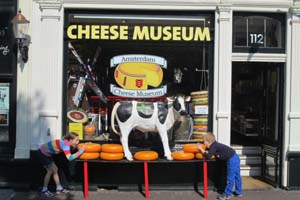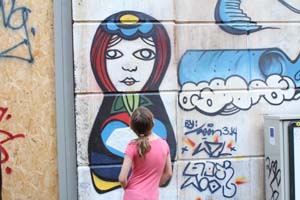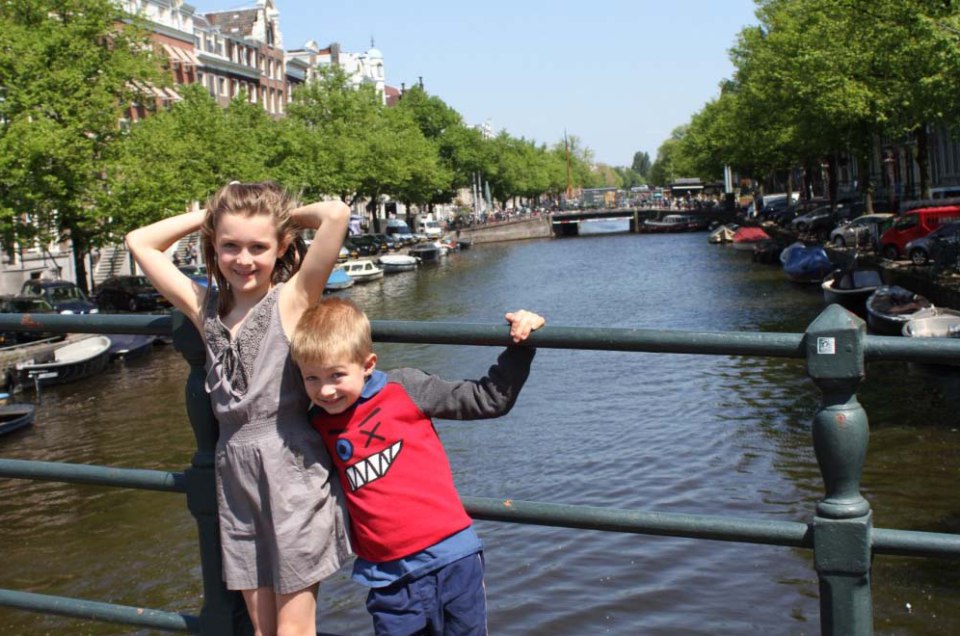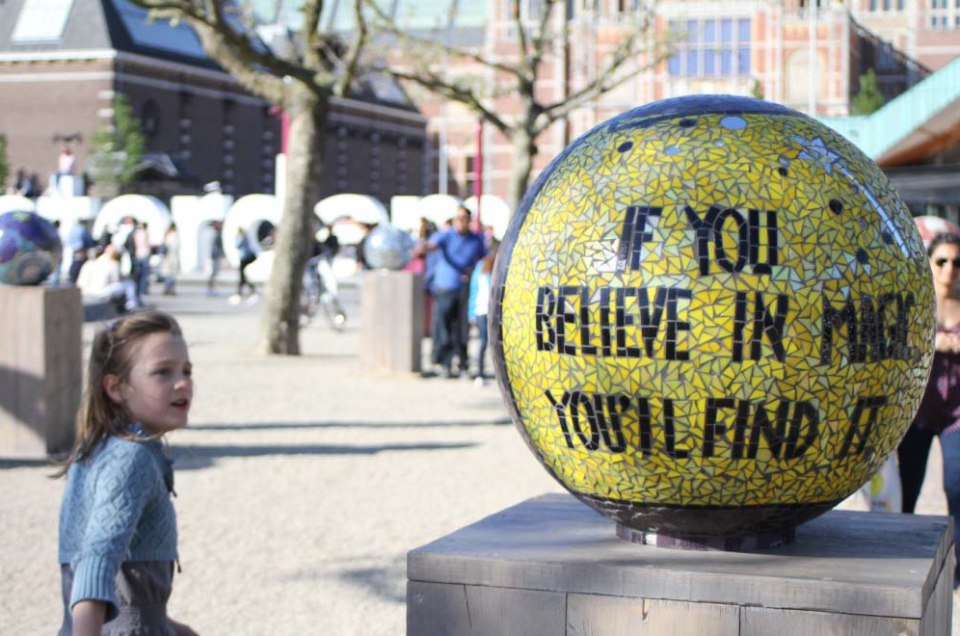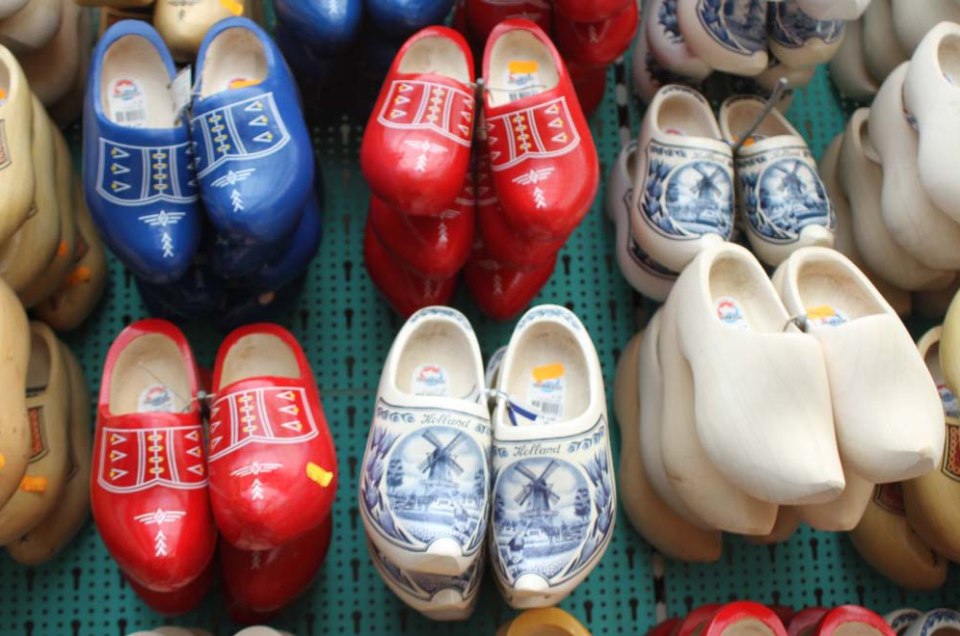It wasn’t until recently that I developed an intense longing to visit Amsterdam. For many years I was tainted by a North American’s view of Holland’s famed city. I pictured it as a place filled with pot-smoking men ogling half-naked women in seedy windows. I had no desire to put it on our family’s travel agenda.
Then something interesting happened. I became close friends with a Dutch woman whose love affair with the city was infectious. She told me ad nauseum about the beautiful canals, delicious food and impressive museums. She raved about the culture, the people and the architecture. I hadn’t lived, she said, until I’d seen Amsterdam.
A rave review like that one was hard to ignore, so we packed up the kids, revved our engine and began the seven-hour journey through England, France, Belgium and into the Netherlands. Upon our arrival, we checked into Hotel Amstelzicht, a supposedly four-star establishment conveniently located around the corner from Rembrandtplein, one of the city’s busiest squares surrounded by nightclubs, cafés and restaurants.
Our “family” room was dusty and dank, the bed full of springs that poked us in the ribs and the main door to the building banged so forcefully that it shook our walls as we tried to sleep. Luckily, the city’s stunning canals and rich history provided us with a much more comfortable “home.”
The kids played hide and seek amongst the life-sized bronze statues of Rembrandt’s The Night Watch as we waited for a tram to take us towards Dam Square. The Square, which many say is the heart of Amsterdam, is famed for being the reception place for Napolean and his troops during their 1808 take-over of the city. The juxtaposition between old and new is obvious with the Dam’s Royal Palace on one side and across from it a zone for cycle parking. Hundreds of bikes of all different shades and patterns cover the sidewalk by the fittingly phallic National Monument, a memorial to the victims of World War II.
With half a million cyclists travelling the streets of Amsterdam each day, the city is overrun by bikers and we narrowly escaped being hit on dozens of occasions. Shortly after our third near collision, we devised a “stay alive” plan: hold on to the children’s hands with a death grip, look in every possible direction – even diagonal – before crossing the street, then run. It was with this technique that we finally reached the Ann Frank House. The house itself is found on the shore of Prinsengracht, the outermost of Amsterdam’s three main canals, neighboured by some of the city’s most prime real estate. While I waited in line for an hour to get in (I wasn’t organized enough to pre-purchase tickets) Austin and the kids wandered the nearby streets, visiting a cheese museum and enjoying fresh croissants at a café on their way. Upon their return, we entered the impeccably restored and expansively renovated museum. While a couple of the videos and images of the Holocaust were a bit graphic for 6-year-old Pierce and 7-year-old Marley, we had prepared them well for what we would see by reading a children’s version of Anne Frank’s Diary before we left. They were as moved as I was when climbing the same stairs Anne climbed numerous times on her way up to the Secret Annex and they were both silenced by the sacred yet eerie feeling that encapsulated the few small rooms she, her family and their four friends shared.
Afterwards, in a move to cheer us all up, we boarded a Blue Boat Company canal boat for a more touristy view of the city. The 75-minute cruise cost €39 for a family ticket and included an audio guide offered in 17 different languages. We learned about the history of the impressive 17th century houses that lined the canals. Tall and thin (about 30 feet wide max), these residences were often home to doctors, artists, politicians and wealthy merchants who stored goods in their attics and cellars. They were built with decorative gables on the tops and had a pulley near the roof to lift heavy objects to higher floors when the canals flooded. “I’d totally lift you up to the top of one of those houses if I had a pulley,” Pierce playfully said to his sister. “Even if there wasn’t a flood.”
Day two was art and museum day. We dipped our feet in the fountain outside the newly renovated Rijksmuseum and played in the adjacent playground before making our way to the nearby Van Gogh Museum. Marley, who had studied the troubled Dutch artist at school the year before, begged us to go in. The bill: €30 (€15 for each adult, the kids went free). Although my husband and I worried that the art would be lost on our children, we were pleasantly surprised. The kids both received a children’s activity booklet/treasure hunt when we arrived. They were so excited about finding the answer to the next question that they raced through the museum to see the next clue. After finishing their sheet, which took a good hour, we took them back to visit their favourite paintings. Pierce and I sat in front of Wheatfield With Crows for 15 minutes, discussing the various painting techniques and colours while Marley was infatuated by the famed sunflowers which Van Gogh painted for his friend Paul Gauguin’s room at the Yellow House in Arles.
For a break, we wandered through Vondelpark, the 45-hectare park named after the Dutch poet Joost van den Vondel before finding our way to NEMO, a massive, boat-shaped science centre. While a bit of a pain to get to (no trams reach it), the five-floor museum entertained us all for a good three hours. We made soap bubbles bigger than our bodies, built bridges and flew a plane using a well-aimed spotlight. The kids begged us to stay longer.
We spent our final day wandering aimlessly through the city’s streets, crossing bridges and stopping for snacks. At one point, after exiting Amsterdam’s oldest church, Oude Kerk, we realized that we had wandered quite far into the heart of The Red Light district. Now to be honest, I’d made my husband promise to let me see at least one street in the district – I had to be able to say I’d been there done that. But I had no idea how difficult this task would prove to be when walking with two young children in tow.
At one point, we crossed a bridge and entered what I’ll term the window district. Shop upon shop of windows lined both sides of the canal, some with closed curtains and others featuring the symbolic lingerie-clad woman selling her wares. It was the sex shops I hadn’t counted on. Massive “toys” and blow-up dolls lined the storefronts while we distracted the children by looking at boats in the water below. Remembering that our kids are both extremely literate and aware of their surroundings, we spent the majority of the adventure scanning the streets ahead and pre-planning our distraction techniques. Upon seeing a sign that read Live Sex Show in 1,000-point, neon font on a building ahead, I quickly said, “Wow, look at that awesome boat down there, don’t you love its red roof.” A prominently displayed postcard of a naked bum with a Monica Lewinsky-placed cigar prompted an “Oooh, look at that tall house on the other side of the street. Can you find its pulley?”
Surprisingly, the kids hadn’t uttered a word about the strange things they managed to see despite our distraction techniques. In hindsight, their silence may have been a result of their shock and utter confusion. A few streets outside of the district I breathed a sigh of relief, welcoming the comforting sight of clean cafés and clothing stores albeit with a faint smell of weed in the air. I was amazed that I hadn’t had to explain anything to the kids, especially Marley, who picks up on everything. Just then, she took my hand and looked up at me with her bright, sparkly blue eyes. “They must sell a lot of bikinis in Amsterdam,” she mused. “Yes, they definitely do,” I said as we headed towards home.
